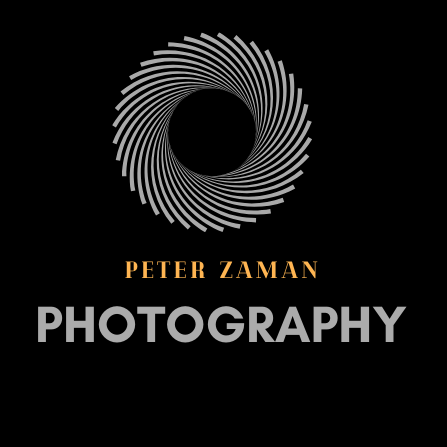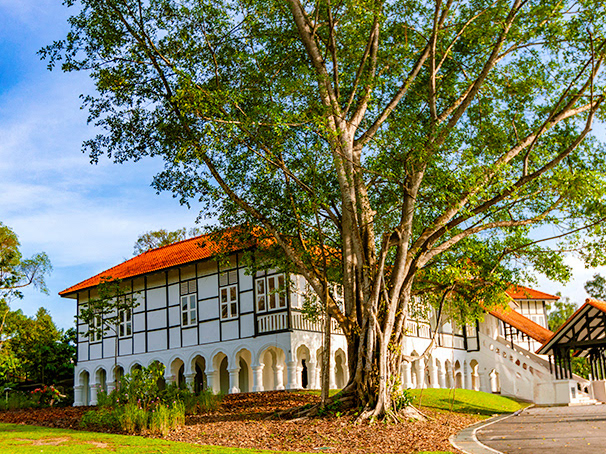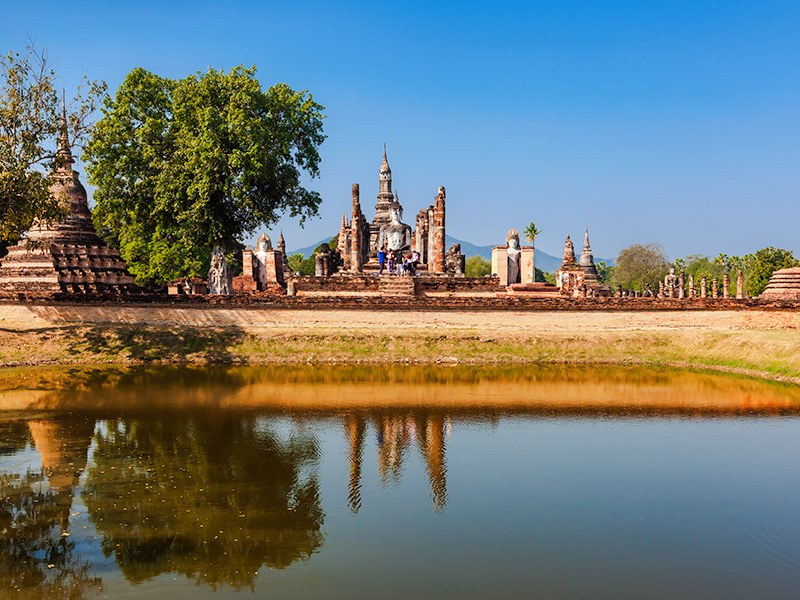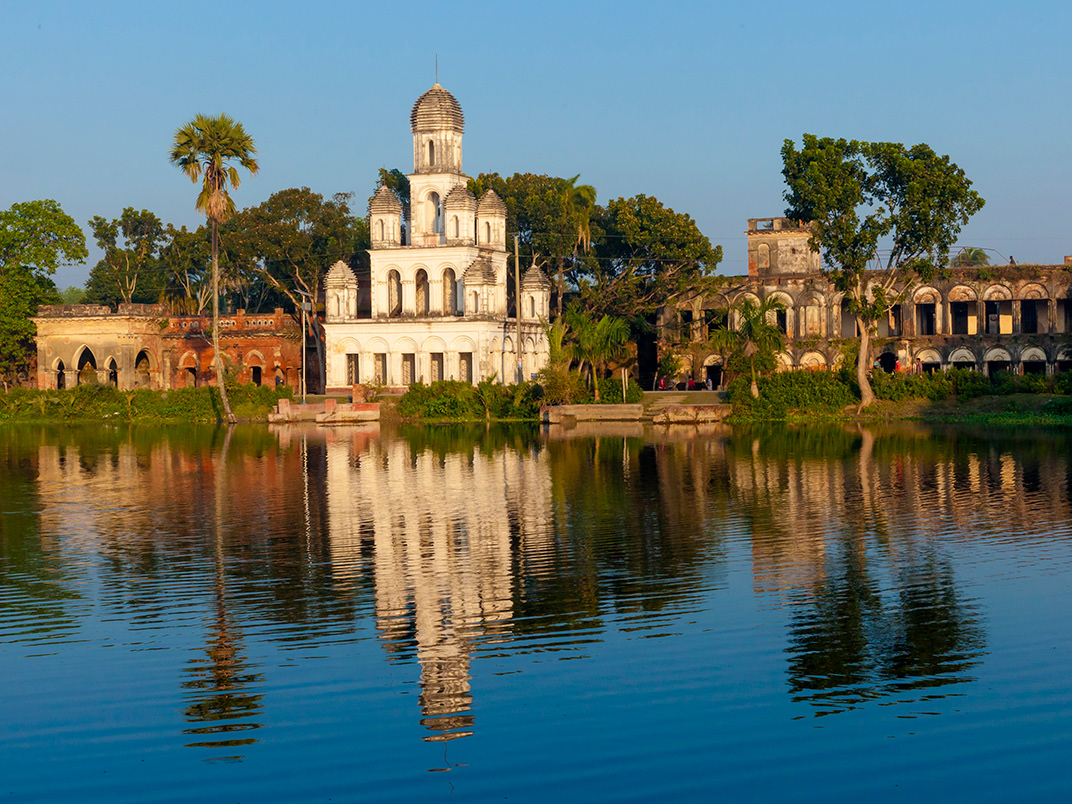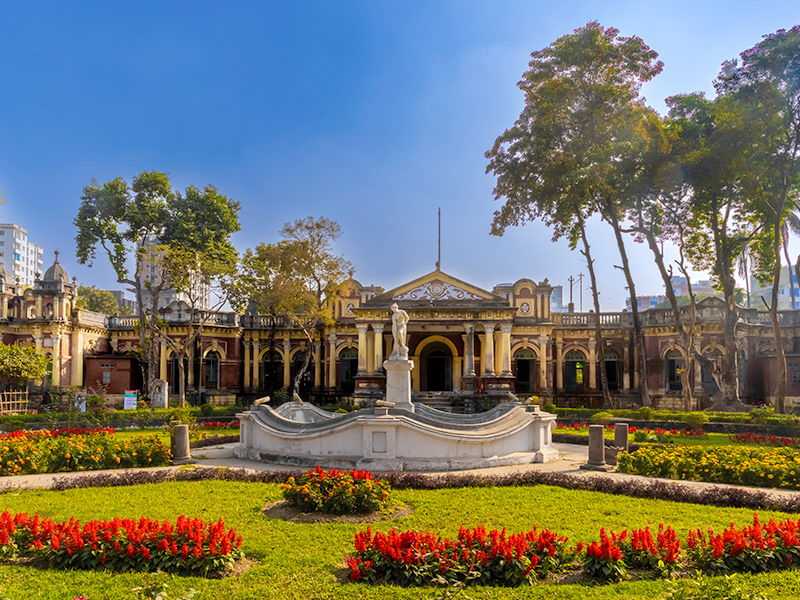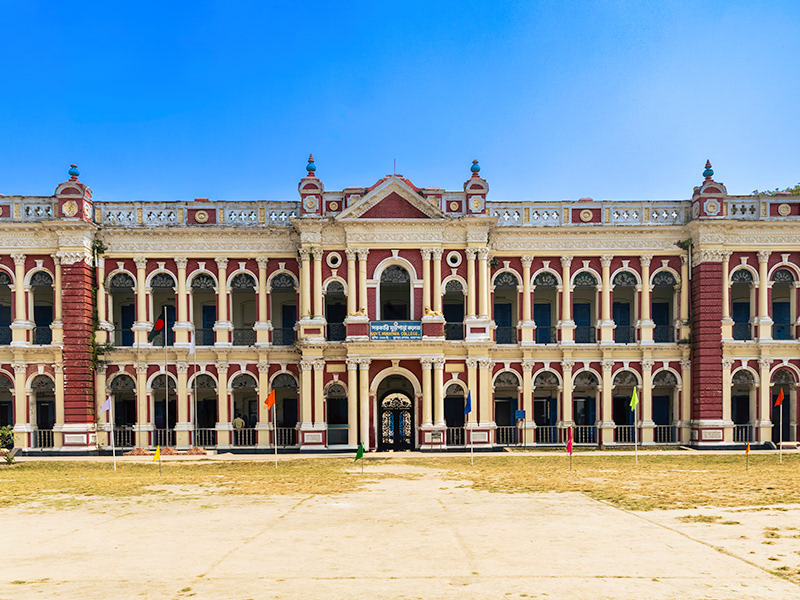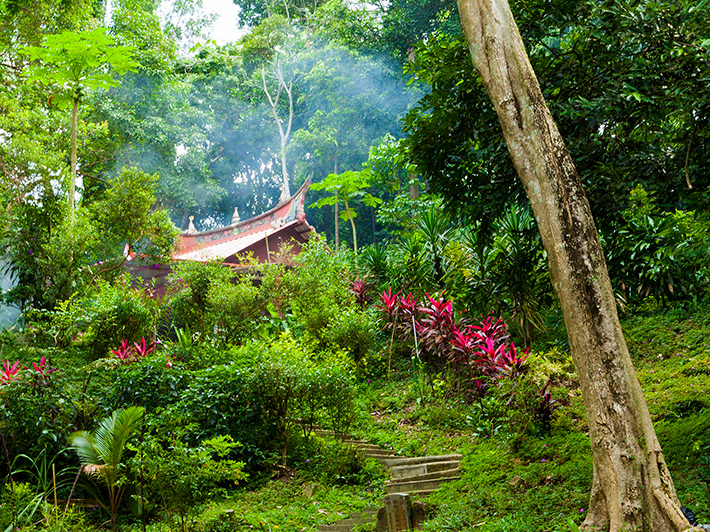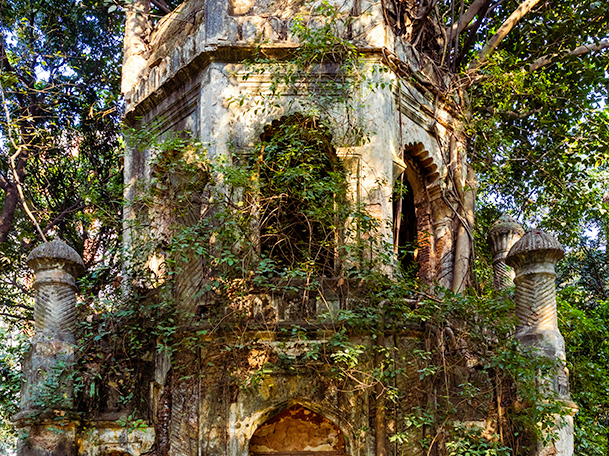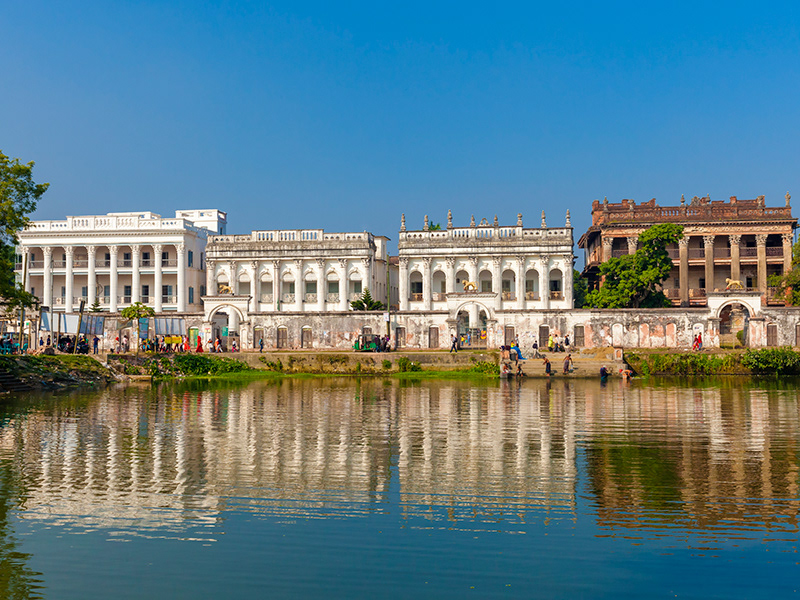The third zemindar house to feature in my blog is that of the Raja of Bhawal. This is within easy reach of Dhaka, located in Gazipur. Bhawal was one of the biggest and oldest estates in Eastern Bengal. At it’s peak it covered 579 square miles (1,500 km2) with a population of around 500.000 (including, tenant farmers).
The title of ‘raja’ and ‘Roy’ was first vested on Kalinarayan (whose surname was Bhawal), by the British Government in 1878. Kalinarayan Roy was succeeded by his only son, Raja Rajendranarayan Roy who himself died early and left behind three sons.
Unlike the previous former zemindar houses that I have so far visited this one has been operated as a government establishment, housing the District Commisioner's offices as well as various courts. Sadly, whilst this has preserved the external structure of the main buildings, it has nonetheless meant that much of the internal detail of the building has been lost.
The building is a very large structure with many sections and floors. There are at least three different government organisations housed in the former palace premises. I found it most interesting to see prisoners held captive in the area where the Zemindar would historically have enjoyed dance recitals.
As with many local government run establishments, the area was noticeably dirty and it was sad to see how little respect was given to a Palace with which such a fascinating story is intertwined.

The front facade of the Palace
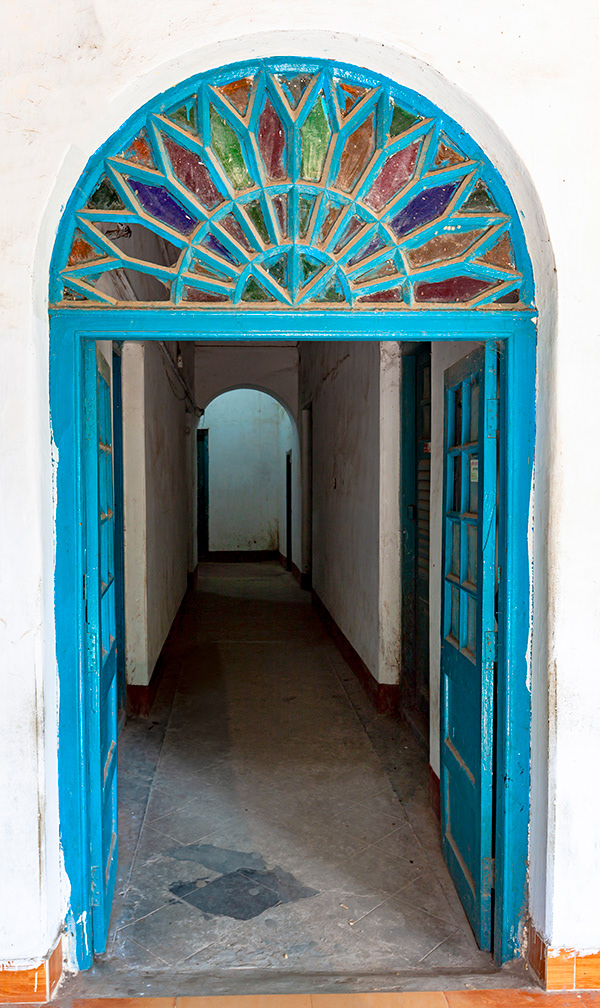
Orignal door of the Palace

The tiger den (where the Raja kept his tigers)
The last heir to the estate, Ramendra Narayan Roy, was the second of the three sons of Raja Rajendranarayan Roy and is alleged to have died in 1909 in Darjeeling. This was before he inherited the estate, and the death of his other brothers left the estate with no heirs. The property then reverted into State Control until some years later a hermit (‘Sadhu’) appeared and people identified him as Raja Ramendra Narayan Roy. A legal battled ensued in 1933 which lasted 20 years, where eventually after various appeals, the hermit won the case and the property on the 30th July 1946. Sadly, just two days after the court’s verdict, the Raja died of a stroke.
More popular versions of this story include that the Raja’s wife was having an affair with her physician and they together conspired to slowly poison the Raja during the trip to Darjeeling. Although his body was supposed to be cremated in Darjeeling, a sudden heavy thundershower drove the mourners and others to seek shelter, abandoning the lifeless prince on the unlit funeral pyre. Some Naga hermits found him and revived him but he’d lost his memory. He became a wandering hermit and eventually in 1920 his memory returned and returned to Dhaka. However, initially the Sadhu did not seek to make a claim for the estate.
In its day, this was a sensational story that captivated the populous and it has since provided material for many books, TV serials and films (see references below) including an Indian film released as recently as 2018.
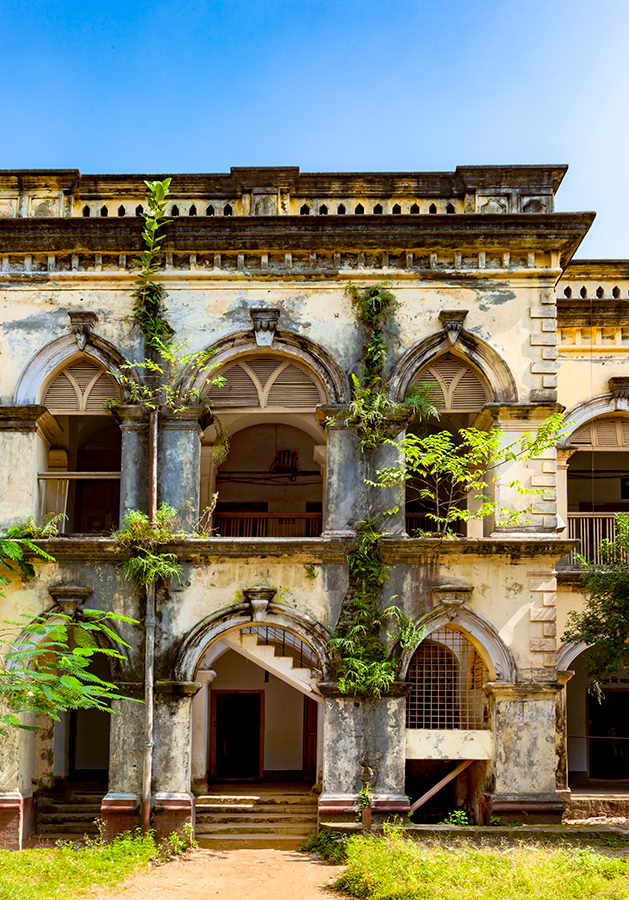
Detail of the side of the palace
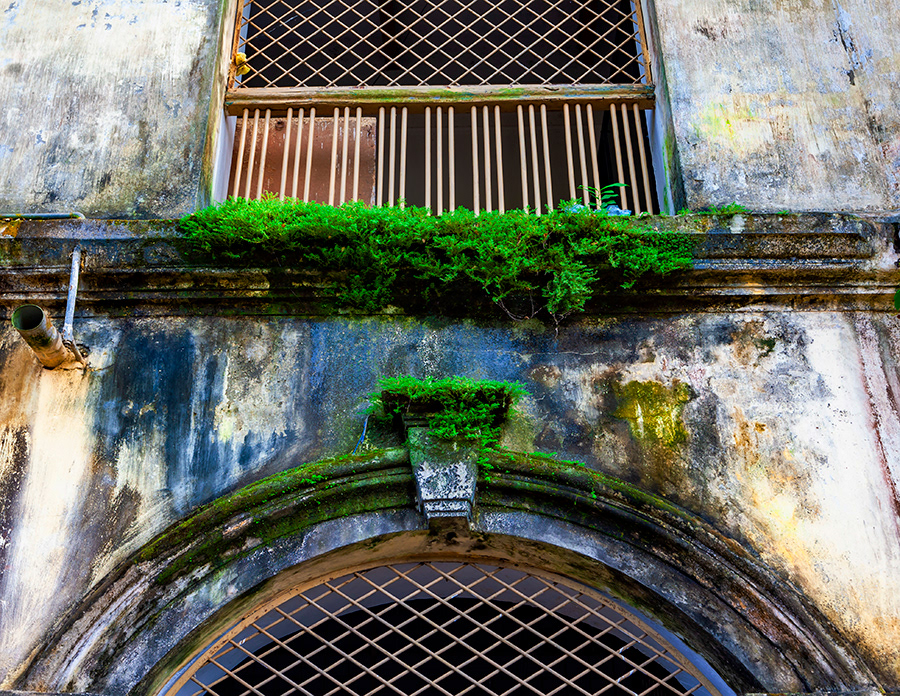
Orignal grill and arches of the palace
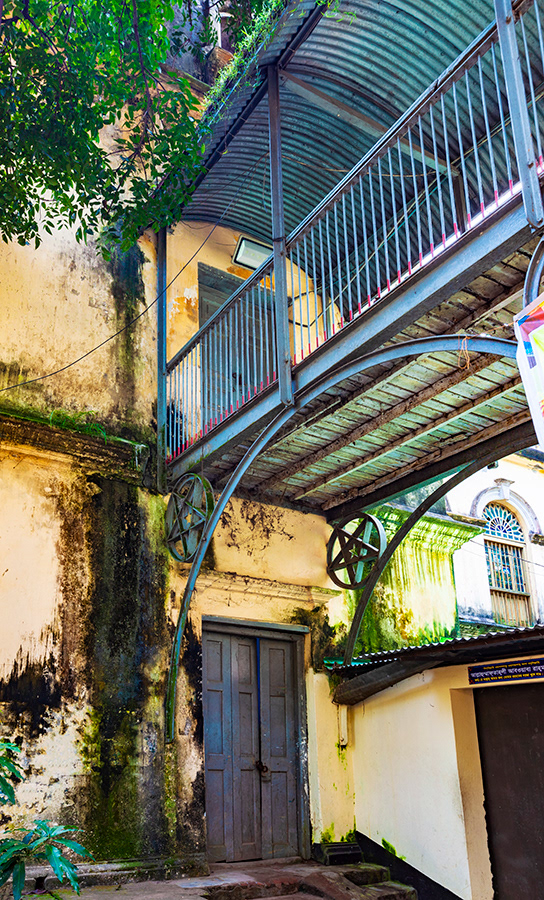
Wrought iron bridge connecting two wings of the Palace
In terms of a visit to the estate, it is worth the journey but, for me, the real excitement was seeing the royal crematorium, the Bhawal Raj Shoshaneswari’. Located beside the Chilai river it is a short walk from the palace. Funerary temples were built for each Raja over the spot where they were cremated, including the last raja Ramendra Narayan Roy. The Shoshan’s were in state of disrepair but the oldest temple was simply stunning as I hope the photos show.
There were three funerary temples. The tallest was also the oldest and the most impressive. I was told that there used to be a jewel at the top of the spire, now long stolen.
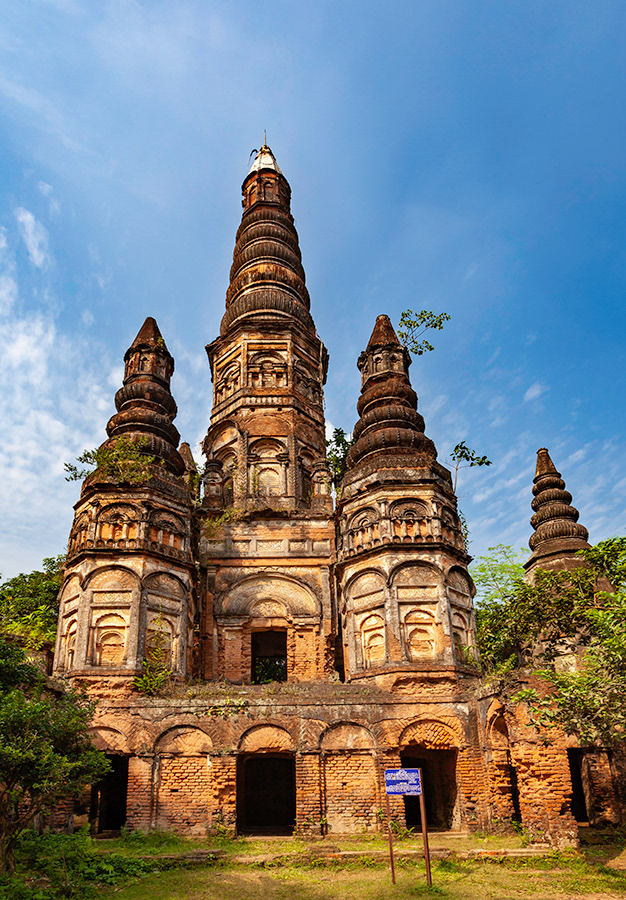
The oldest temple
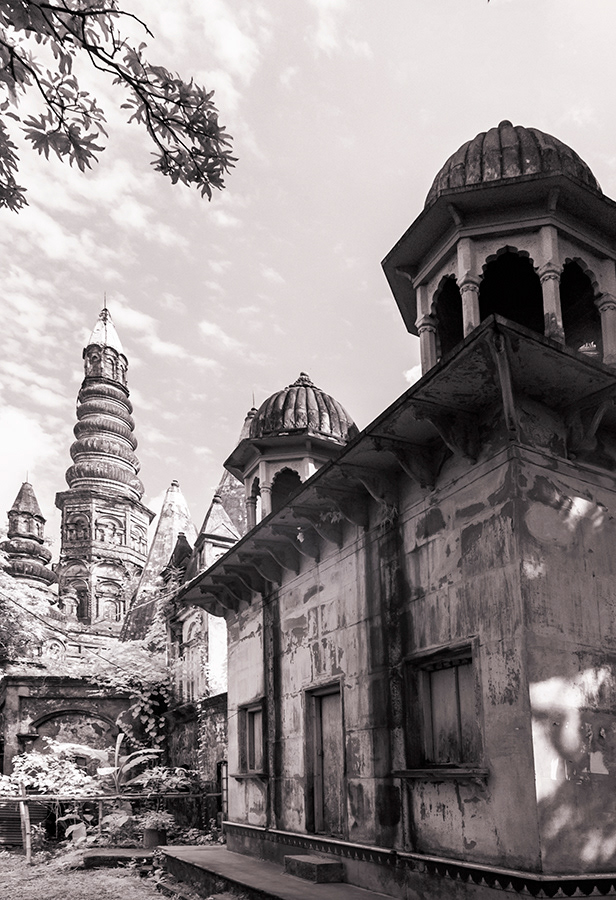
View of the three temples from the back
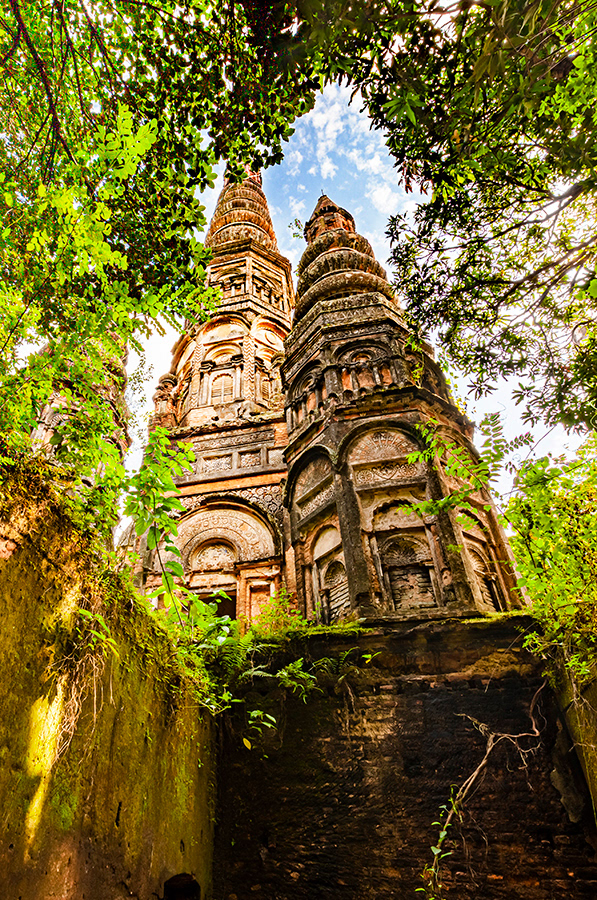
The back of the first temple
The last of the funerary temples, of Raja Ramendra Narayan Roy, includes a sculptured image at the back of the temple.

The second funerary temple

Raja Ramendra Narayan Roy's temple

Detail of the interior of the last temple
Location: The Rajbari is located in Gazipur. It is about 14 km from Dhaka and will take about 2 hours to get there via the Dhaka-Tongi diversion road.
References:
(1) " A Princely Impostor? : The Strange and Universal History of the Kumar of Bhawal”. by Partha Chatterjee, Princeton University Press, 2002.
(4) ‘Raja Sonyasi’ released 1966, Directed by Khan Ataur Rahman; ‘Bhawal Sonyasi’, also release 1966, Directed by Raunak Chowdhury
(6) Ek Je Chilo Raja,’ Directed by Srijit Mukherjee, 2018. https://hifipublic.com/post/bhawal-king-came-back-from-the-dead
